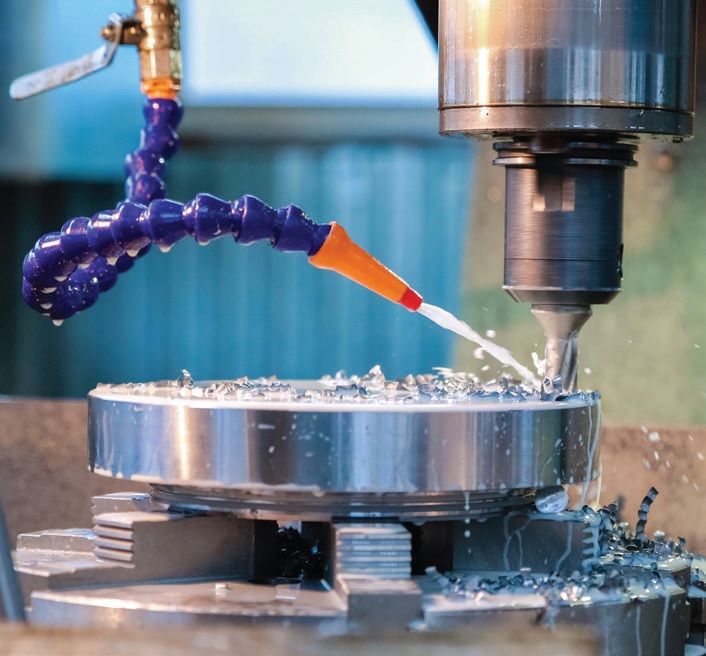The challenge of metal-removal fluid specifications
Don Smolenski | TLT Machinery August 2019
If you’re thoroughly confused, that probably means you understand.

A multitude of different machining processes each needs its own fluid.
© Can Stock Photo / sergeidvornikov
In a previous TLT article, I discussed the GM LS2 plant lubricant standards and how we used them to put more rigor into how GM specified and procured plant lubricants. In this article, I examine how much more challenging it is to specify metal-removal fluids (MRFs) than “ordinary” plant lubricants such as hydraulic fluids.
Whereas GM LS2 basically had one specification for an antiwear mineral hydraulic fluid (with different viscosity grades), MRFs include the broad categories of straight and aqueous fluids, each with markedly different compositions and performance characteristics. I won’t claim that what we developed at GM is the best way to define MRFs, so if you are thoroughly confused when you finish reading this article, you grasp the complexity of what we were trying to do!
Straight oil MRFs, like mineral hydraulic fluids, are used in neat form. Several key properties can be specified using available standard tests. Unfortunately some of the most important fluid properties, such as machining performance or misting tendency, are generally lacking for standard tests—much less for passing limits. To further complicate matters, the workpiece (and its relative machinability) and tool materials can vary greatly, and there are a multitude of different machining processes (milling, drilling, grinding, broaching, etc.), each with their own fluid needs. It would probably be easier to train a Labrador not to chase squirrels than to write a comprehensive specification.
So how on earth do you write specifications for MRFs? In the LS2 standard we first specified tests for certain properties (such as rust, corrosion, foaming tendency), where we believed there was a relevant existing standard test that could be applied and reasonable pass/fail limits chosen. Then we considered additional tests that we considered at least reasonably relevant (OK, maybe a little bit of a reach) to machining, but we had no clue as to what a reasonable passing limit might be.
So what the heck good are they? We included them in the specification as
report only, the thought being that we could, in the future, review in-use performance in any given property area and see if—at least in a qualitative sense—we observed a correlation between the bench test results and performance in actual machining processes. If so, we could use this as a basis for setting a pass/fail limit (very much easier said than done!).
Specifying aqueous fluids provides an even greater challenge. We considered three different broad categories of fluids: soluble oils, semi-synthetics and synthetic oils. Soluble oils were loosely defined (by many but not everyone) as emulsions (with water), semi-synthetics as microemulsions and synthetic fluids as true solutions. Each of the three categories was further subdivided based on whether or not they had extreme pressure additives. These MRFs are diluted with water prior to use, and the characteristics of the diluent water (e.g., hard or soft, chloride concentration, etc.) have very significant effects on fluid performance. Some of the performance tests were to be run on the neat concentrate and others on the concentrate diluted to the recommended concentration with either a “standard” diluent water or the specific plant water, if agreed upon between the supplier and the plant.
Did these tests alone specify a fluid that would enable productive machining? Absolutely no, not even close! But they did exclude fluids that failed these basic tests, so at least we were starting to narrow the field. Machining trials would still be required. Even with all this, we still haven’t begun to address the in-use maintenance of MRFs, which is very complicated and extremely critical to their machining performance.
Thoroughly confused yet?
Don Smolenski is president of his own consultancy, Strategic Management of Oil, LLC, in St. Clair Shores, Mich. You can reach him at donald.smolenski@gmail.com.